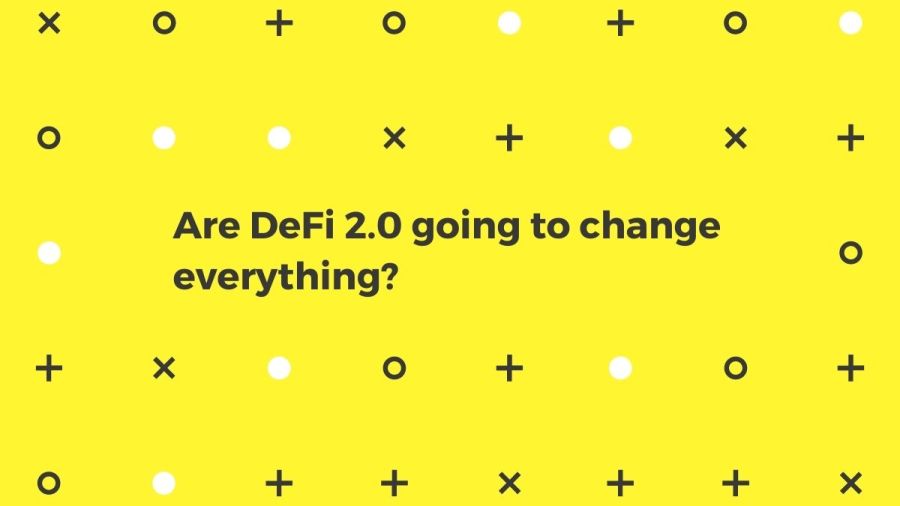CryptoPress
The DeFi 2.0 will change the way you think about liquidity.
What are DeFi 2.0?
DeFi 2.0 is the next stage of decentralized finance. One of its most important components is Liquidity Pools, which give lenders the ability to lend and decentralized exchange to happen more seamlessly. DeFi‘s newest project is a huge step for this space. By using smart contracts, the funds in the account are blocked and used to make lending and decentralized exchanges easier. These Liquidity Pools are an essential component of DeFi systems and they affect how money flows through these systems.
DeFi 2.0 solves the problem of heavy farming and the drop in the price of the token since it is the protocol itself that provides liquidity.
Since its creation, the DeFis has supplied liquidity to its subscribers via Liquidity Pools, or liquidity reserves. A smart contract has been used to block funds in a bank account. These funds are meant to make lending and decentralized exchange easier. As a result, they are an essential component of DeFi systems. The preponderance of these funds is different in DeFi 2.0.
DeFi 2.0 solves the problem of heavy farming and the drop in the price of the token, since it is the protocol itself that provides liquidity.
Users are known as liquidity providers who supply funds on DeFi sites. These users donate money to the platform in return for fees based on their proportional involvement in the protocol’s liquidity. This method, however, generates significant liquidity issues for operators since it supports “intense farming.” An issue that arises when significant “whale” investors deposit enormous quantities of a particular token over a period of time, then withdraw all of the invested funds and depart, leaving the protocol with no liquidity and reducing the token’s price.
DeFi 2.0 is a family of protocols and software that facilitates the creation of networks and the training of agents capable of generating liquidity on these networks.
DeFi 2.0 and DeFi are different in the way they handle liquidity mining.
With DeFi 2.0, they tailor liquidity to platforms and Protocols, and hence customize the training of agents and the generation and deployment of liquidity.
Starting with the change in the design of liquidity mining, which is the basic principle of this new phase of decentralized finance, capital management will be much easier for both parties (investors and entrepreneurs).
How much can the DeFi sector grow?
The DeFi sector has shown great growth in the past few years – especially in 2021. DeFi Pulse, a platform that analyzes decentralized finance (DeFi) performance, shows that the total value locked was approximately $113.652 billion in November. The chart below shows how exponential the growth has been since 2018.
The future of DeFi looks bright with Billions and Billions in capital being created. This is a sector that is only going to grow exponentially — but right now the best place to be is at the ground level, watching it grow firsthand and making your own money along the way.
What is OlympusDAO?
The first project to create and apply DeFi 2.0 model was Olympus DAO and its token $OHM.
Olympus is an open protocol that uses different assets and stablecoins to create a decentralized banking and finance platform. This platform will enable users to send and receive assets, transact, trade, and make payments with their peers.
The protocol is created with the intent to bridge the last mile of decentralized technologies. In addition, the protocol aims to create cross-blockchain assets, as well as enable the creation of cross-blockchain exchanges and decentralized trading platforms.
Instead of rewarding liquidity providers, incentive tokens are discounted to users. In this approach, investors want to provide liquidity since they obtain it cheaper than the market. The protocol also eliminates liquidity issues since this money is now theirs. That is, monies go from liquidity suppliers to protocol.
This concept addresses “heavy farming” by giving long-term reserves. DeFi 2.0 protocols no longer depend on liquidity suppliers not departing as loans expire or incentives decrease. Now they own their reserves, forming a proprietary treasury. As shown on the OlympusDAO website, the protocol now controls 99.85% of its liquidity.
$OHM
The OHM native token powers this decentralized reservation system. Tokens are backed by other cryptocurrencies, such as algorithmic stablecoins (DAI, FRAX, etc). The goal is not to keep the price consistent, but to give the coin an inherent worth that cannot be lowered. It’s decentralized algorithmic reserve money.
1 DAI backs each OHM. When the OHM trades below 1 DAI, the procedure buys and burns OHMs. Because it is a stablecoin, the OHM will always be worth more than 1 DAI. In reality, the current price of 1 OHM is $. Their website claims the extreme volatility is due to the project being in its infancy and warns that the token’s price might fall precipitously if market sentiment becomes negative. In fact, the excessive price volatility has prompted some users to warn of a pyramid or Ponzi scam.
The platform’s goal is for a Decentralized Autonomous Organization (DAO) to govern the OHM’s monetary system and limit supply growth. The existing loan and bond system is built on game theory, where participation and bonding benefit the protocol but selling does not.
DeFi 2.0 is the next chapter of the decentralized finance revolution that promises to return the control of investments to individuals. Within this revolution, people can not only invest their money with confidence but also create and exchange assets from anywhere in the world.
© 2024 Cryptopress. For informational purposes only, not offered as advice of any kind.
Latest Content
- Crypto Market Update: April 25, 2024
- Renzo’s Restaked ETH Depegs to $700: DeFi Platforms Gearbox and Morpho Face Liquidations
- Crypto Market Update: Insights and Trends for April 23, 2024
- On April 24, the $RTF Token from Oleksandr Usyk’s READY TO FIGHT Project Will be Listed on WhiteBIT
- Crypto Market Update: Key Trends and Insights for April 22, 2024
Related
- IDO (Initial DEX offering) An Initial DEX Offering or IDO (Initial DEX Offering) is the start of a decentralized exchange (DEX)....
- How to Profit from DeFi 2.0 with Blizz Finance This is how you can profit from DeFi 2.0 with Blizz Finance protocol....
- Non-Fungible Tokens: The Guide Non-fungible tokens (NFTs) are a new type of token which is represented by unique cryptographic units, meaning that each token has a unique value. ...
- Transform DeFi Yield with Vesper Earn: Deposit One Digital Asset and Earn Yield in Another DeFi Pulse Index (DPI), and DAI, Vesper Earn unlocks new possibilities by allowing users to earn stablecoin yield from their cryptocurrency holdings and vice versa....




